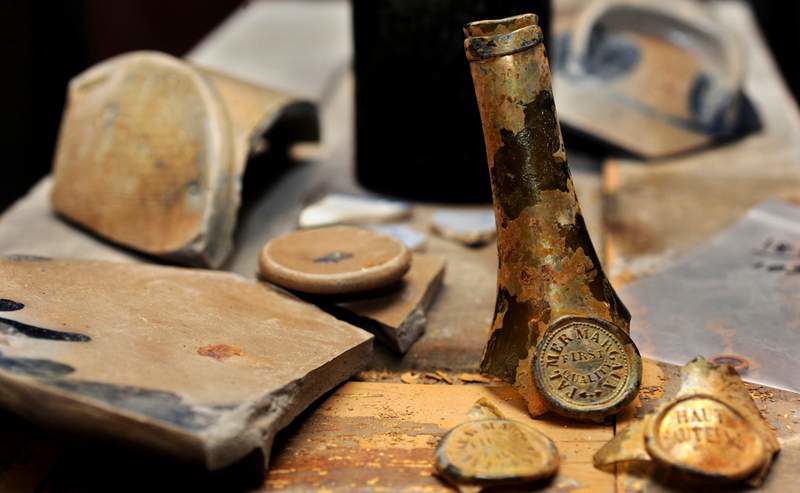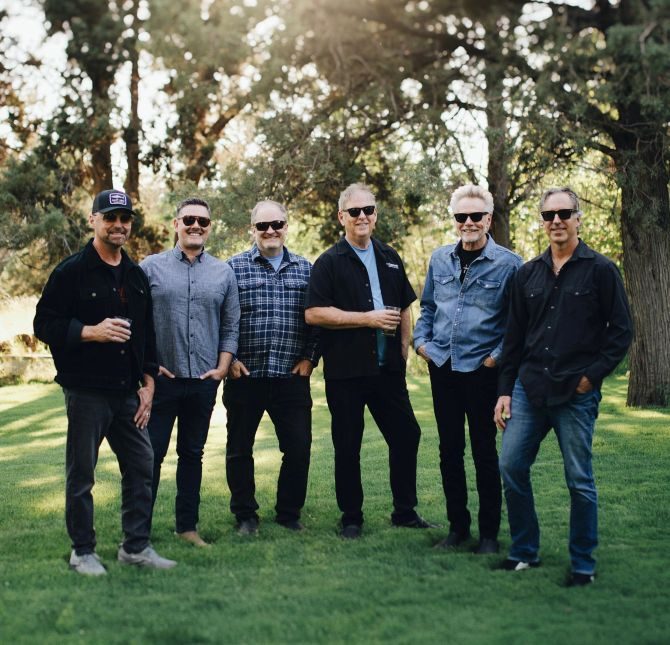Jewish ritual bath unearthed, may be the oldest in the U.S.
Published 4:00 am Saturday, February 26, 2011

- These artifacts, including the wine bottle seals, were unearthed in the row home next to the mikveh during the excavation.
BALTIMORE — Archaeologists peeling back layers of history beneath a historic synagogue in Baltimore have uncovered what is believed to be the oldest Jewish ritual bath complex in the United States.
Hints of the presence of the 1845 bath, or “mikveh,” were first detected during excavations in Lloyd Street Synagogue in 2001. But further digging this winter has revealed about a quarter of a 5-foot-deep wooden tub, and linked it to a related cistern found in 2008, and to remains of a brick hearth once used to warm the bath’s water.
“The idea of a ritual bath complex helps fill out the history of Jewish religious practice in this country,” said Avi Decter, executive director of the Jewish Museum of Maryland, of which the old Lloyd Street Synagogue is now a part. “This is a very ancient practice, going back thousands of years.”
The 1845 mikveh is just a few feet away from a pair of more modern, tile-lined baths, built and used by the Shomrei Misheres Orthodox congregation that used the building after 1905.
The Lloyd Street archaeological excavations are being led by Esther Doyle Read, a lecturer in ancient studies at the University of Maryland, Baltimore County, and her students. They are funded by the museum, the Maryland Historical Trust and the university.
Read said mikvehs were a central part of Jewish life at the time, where men came for ritual purification before Friday prayers; women came for ritual cleansing after their monthly periods; and converts were purified before entering the faith.
“It was a very busy place for this small community of German immigrants,” Read said.
Barred by Maryland law from incorporating and owning property until 1828, she said, Jewish congregations would typically meet in private homes, where they would build their mikveh in the basement.
The mikveh excavated this winter appears to have been one of those.
No mikvehs have been found at any older synagogue in the United States.
When the congregation expanded its synagogue to the rear in 1860, it tore down the old mikveh house, filled in the bath and buried it beneath the addition. (The dig has turned up a wealth of artifacts in the fill dirt — broken wine bottles, crockery, buttons and other domestic items — none dating later than 1860.)
The excavations are taking place beneath what is now the basement floor of the 1860 addition. Read and her students first uncovered a corner of the mikveh there in 2001.
“We found an area that had wood in it that began to drop rapidly below the level of the basement floor,” Read recalled. Suspecting what the wood might represent, she halted the dig. She needed to consult with the museum and with experts in wood preservation.
Similar mikveh complexes have been found in Germany and the Netherlands dating back at least to the 1500s, Read said. “The first congregation here was German, and they brought that cultural template to America.”
She said it’s not known where the Lloyd Street congregation built its new ritual bath complex after the 1860 expansion buried the old one. They later sold the building to St. John the Baptist Roman Catholic Church, a congregation of Lithuanian immigrants. The Catholics later sold it to the Shomrei Misheres congregation, which built the two surviving tile mikvehs.
“Only in America,” Decter said. “In Europe, Jewish and Christian congregations did not exchange buildings. But here in the United States, we take over each other’s buildings regularly. … It’s a very powerful story for us.”








